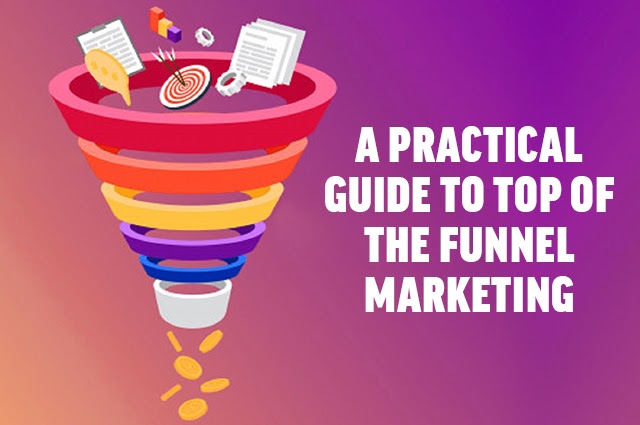Updated September 2, 2021
Having a solid understanding of your company’s marketing funnel is important for achieving your sales goals. But it isn’t enough to just know what the funnel looks like. Having the right strategies in place that will allow you to reliably push leads from the top of the funnel to the bottom.
Keep reading to discover several strategies that you can use to start pushing leads through your marketing funnel more efficiently.
Original Article
As a marketer or business owner, lead generation needs to be your #1 priority regardless of your industry or business size. Indeed, leads are the lifeblood of every business — they’re a prerequisite for sales and the key to sustaining a business.
However, generating quality leads and, more importantly, nurturing them effectively so that they advance along the marketing funnel is not an easy task. In fact, lead and traffic generation is one of the biggest challenges faced by marketers today. Many falter when it comes to picking the right strategies that will give them the most returns.
Since your goal is to eventually drive leads to the bottom of the funnel, you need to first focus on building a robust top-of-the-funnel marketing strategy. And that’s exactly what we’ll discuss here.
But first, let’s try to understand what the marketing funnel is.
What is the marketing funnel?
Simply put, the marketing funnel (or sales funnel) is a visual representation of the customer journey or, in other words, the process of a lead transforming into a customer. You can think of it as a broad net that marketers cast to capture leads and then nurture them at each stage to narrow them down. The ultimate objective, as you can imagine, is to convert as many leads as possible into paying customers.
So, what are the different stages in the marketing funnel? Let’s take a look.
1. Awareness (or top of the funnel)
The top of the funnel (TOFU) is the stage where your potential customers are practically unaware that they have a problem for which your brand has a solution. All they experience at this stage of the funnel are a few symptoms of the problem.
At this stage, they are likely to search for insights, opinions, answers, or resources to learn more about their symptoms. So, your focus should be to generate awareness about their pain points and help them discover your product or brand.
2. Consideration (or middle of the funnel)
The middle of the funnel (MOFU) is the stage where your potential customers have realized that they have a problem and have started to look for possible solutions. They are now aware of your brand and products.
However, they are still comparing you against your competitors and haven’t yet decided whether to buy from you or from others. So, your job at this stage should be to educate them about how your solutions are the best fit for their needs.
3. Decision (or bottom of the funnel)
The bottom of the funnel (BOFU) is the stage where your prospects are looking to make the final decision about who to buy from. By now, they have already evaluated the available options and are gathering that last bit of information before making a decision.
Your job here is to sway their decision in your favor by sharing compelling offers or proof of how you can help them. Customer stories, testimonials, product demos, and free trials usually help to convert leads at this stage.
What is top of the funnel marketing?
As discussed before, at the top of the funnel, your prospects are unaware of their problem. So, your goals should be to help them become “problem aware” and “solution aware”. This is what top of the funnel marketing is all about.
Top of the funnel marketing involves reaching out to as large an audience as possible. But reaching out to anyone and everyone will be a sheer waste of your time and resources. So, you need to make sure that you reach out to a relevant audience.
Knowing your audience
To make sure that you reach out to relevant people, you must create your audience personas first. These are the profiles of your ideal customers or the people you want to target.
These will include information on their demographics, psychographics, and other data. You’ll need to find out the topics they care about, the types of content they consume, and the platforms they frequent.
Why is this so important? Knowing your audience will help you serve up the right content and the right offers that are most likely to resonate with them. This can help you reduce your cost per acquisition (CPA) because a relevant audience is likely to be more receptive to your marketing. And so, you’re likely to get greater conversions with less overall effort.
How to generate top of the funnel leads
Times have changed. Content marketing has almost completely replaced traditional forms of marketing such as TV or print ads. Top-of-the-funnel marketing, therefore, mostly revolves around content these days.
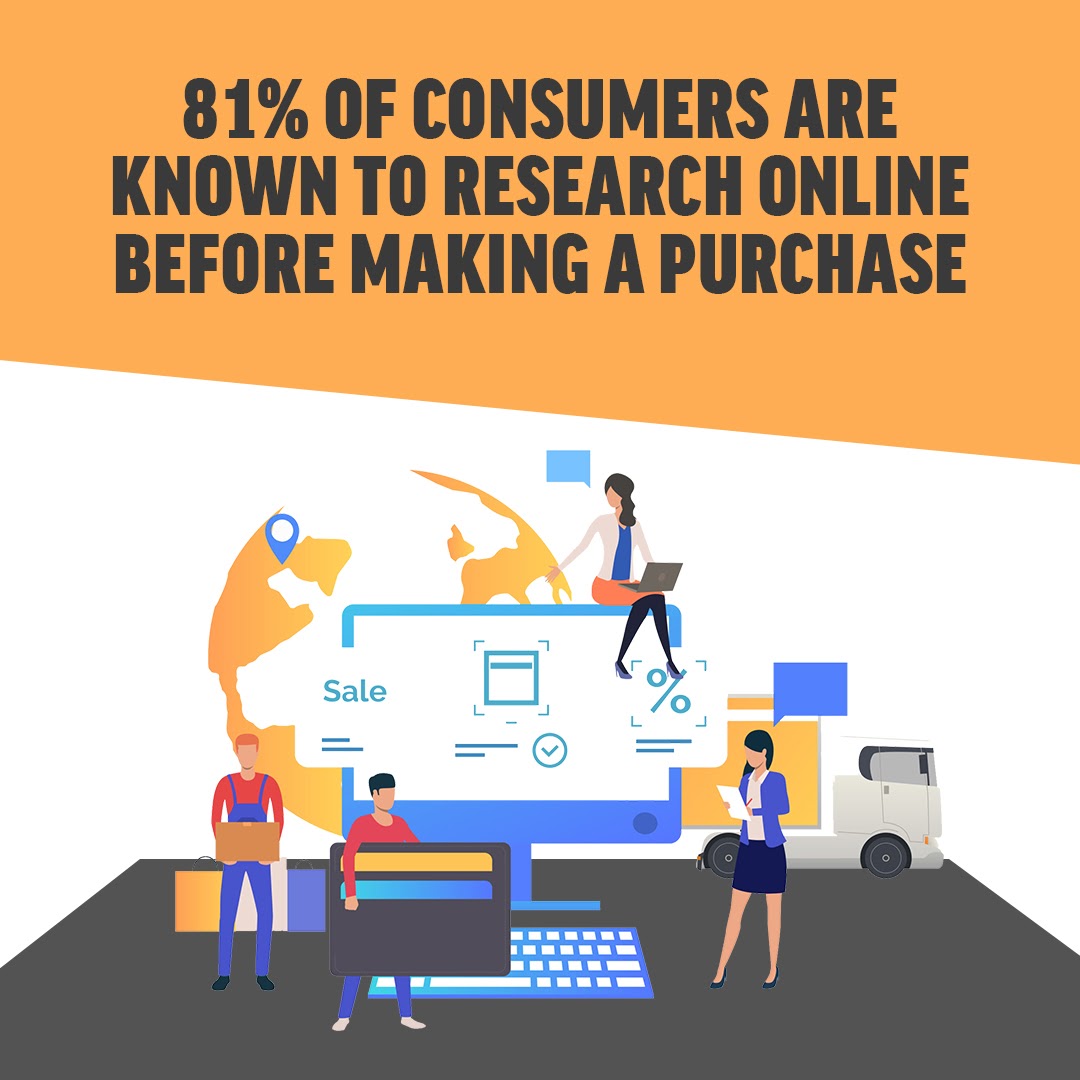
Today, 81% of consumers are known to research online before making a purchase. At this stage of the buyer’s journey, you must serve them content that grabs their attention and drives them to relevant landing pages on your website.
However, you must ensure that your content has a low barrier to entry. Your potential customers shouldn’t need to fill out any forms to read that piece of content. This is because at this stage of the funnel, they will have very little motivation to put their skin in the game.
This, in fact, is one of the main differences between TOFU leads and MOFU or BOFU leads.
Since your leads are more engaged in the middle and bottom of the funnel, you can ask them to submit their contact information in exchange for useful content. Such types of gated content are known as lead magnets. The most common types of lead magnets are case studies, webinars, whitepapers, ebooks, templates, etc.
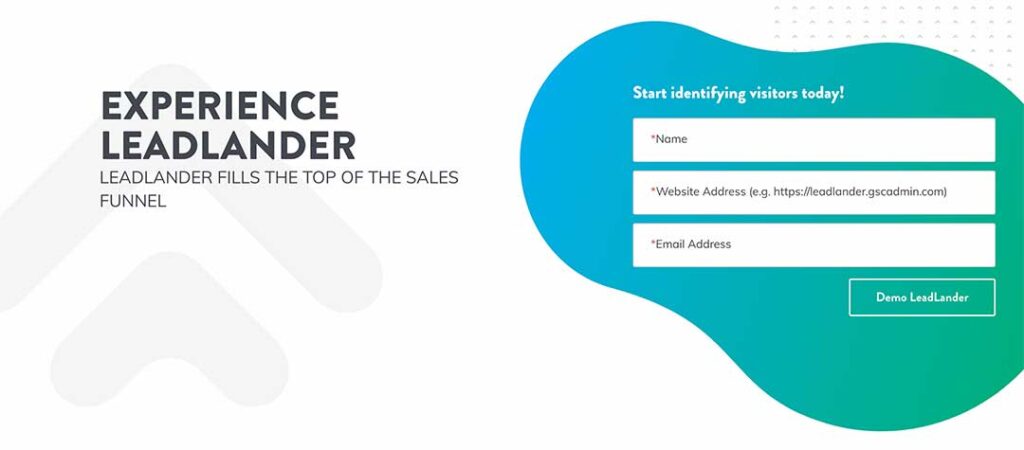
What type of content should you create for TOFU marketing?
The goal of top of the funnel content is to raise brand awareness and establish yourself as a thought leader who can provide value. Also, such content needs to be readily available. So, the best content types for top of the funnel marketing include:
- blog posts
- social media posts
- infographics
- videos
- native advertising posts
- newsletters
To create a successful top of the funnel content strategy, search engine optimization (SEO) and content creation must go hand in hand. You’ll need to conduct proper keyword research and also understand the search intent of your target audience.
At this stage of the funnel, their search intent will be mostly informational. So your content needs to educate them about your brand and what your solutions can do instead of focusing on why your solutions are the best. Using your knowledge of their personas, you should focus on topics that they care about.
Some examples of top of the funnel content
Let’s look at some examples now. Here’s a great blog post from SolarMetric that aims to educate their potential customers about how to install solar panels. The article is informative but not promotional which makes it a great piece of top-of-the-funnel content. It’s also optimized with the right keywords so that it easily pops up on searches.
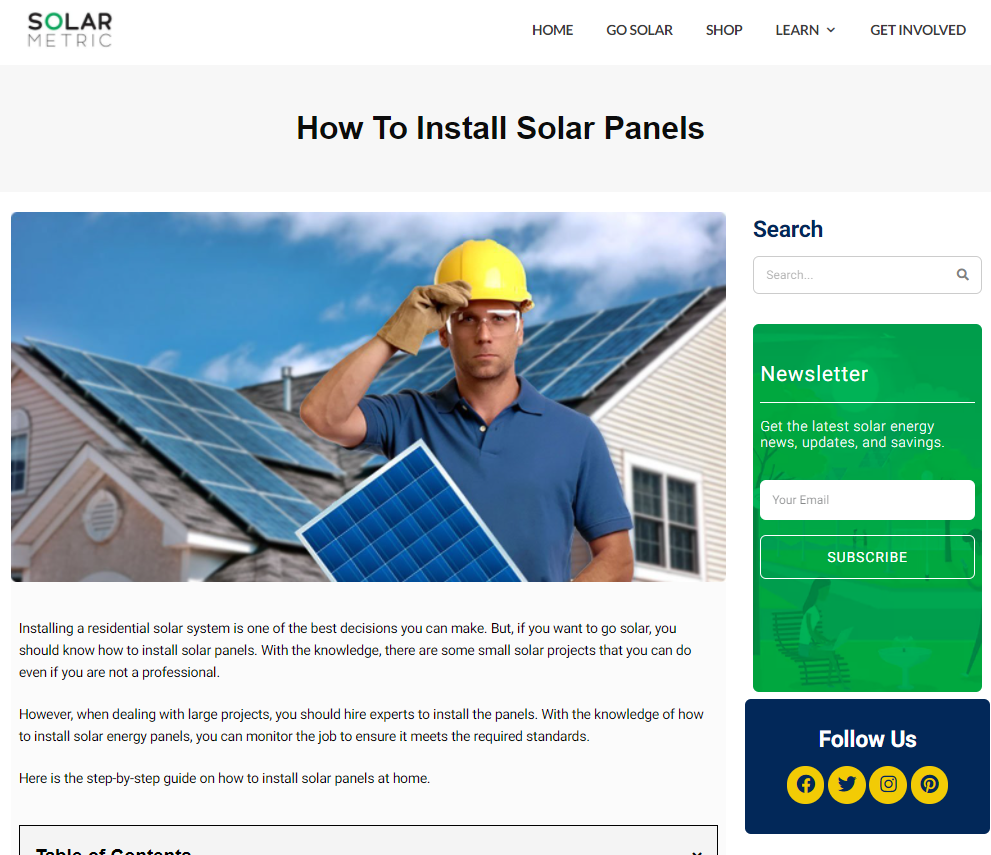
Here’s another example of a great top of the funnel content from Buffer. It’s an aesthetically appealing social media post that immediately catches the viewer’s attention and directs you to an informative blog post about how to use Instagram Stories.
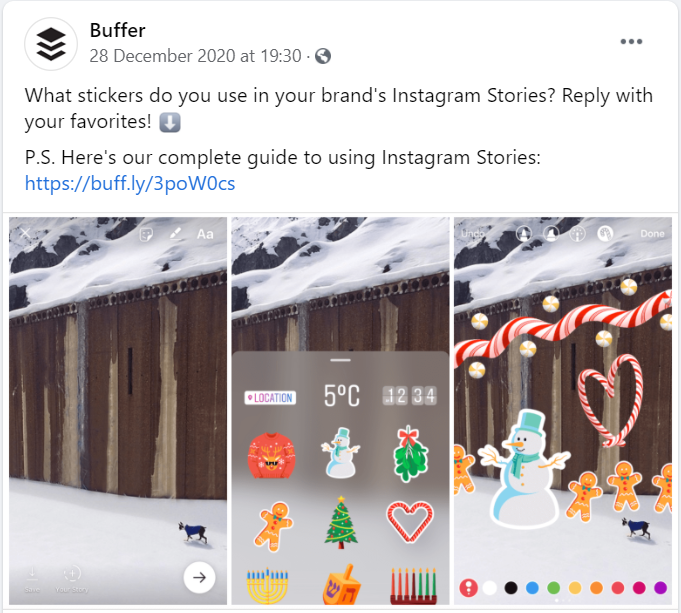
How to nurture top of the funnel leads
So you’ve identified your audience personas, done your keyword research, and created some catchy, informational content that has started to generate top of the funnel leads. Does that mean your job is done? Unfortunately, not.
If you let them be, those leads are most definitely going to end up in the sales funnel of a competitor. So, you must nurture these new leads and push them further down the funnel so that they can become qualified leads.
Research suggests that calling your leads within 5 minutes of their interaction with you increases your chances of converting them by 9X.
So, if you can find a way to route your top of the funnel leads to your salespeople, they would stand a much greater chance of converting them. Since these leads are warmer, they are likely to have more success with them as opposed to cold calling people out of the blue.
Try the 4-1-1 Approach
Email marketing campaigns are still one of the most effective ways to push a lead. But you need to embrace the right approach if you want to milk this channel.
That’s why you should consider the 4-1-1 approach to email marketing, which Twitter popularized. The idea is that for every four educational or entertaining emails you send, you should also send one soft promotion email and one hard promotion email.
Sticking to this strategy will ensure you’re hitting the right balance between providing value to your leads and inching them closer to your sales goals.
Focus on Staying Relevant
Your goal as a marketing professional is to find leads and move them toward becoming paying customers. But sometimes, it’s also important to take a step back and consider what your leads want from you.
It’s easy to get lost in trying to tell your leads what you want them to know, but they’re going to lose interest in what you have to say eventually. That’s why it’s important to periodically reassess whether the content you’re sharing is relevant to leads’ interests.
Automate Your Process
Having too many leads is a problem that every company wants to have – but it’s still a problem all the same. If you’re trying to manage multiple leads simultaneously, that can make it challenging to give each of them the dedicated attention they need to become a customer.
One solution to this problem is to bring some automation to your funnel-based marketing process. A great way to do that is by investing in automated drip marketing technology to turn on or off whenever needed.
This allows you to stay engaged with your leads, even when you’re too busy to contact them individually. But when you do have time to speak to each lead individually, you can turn off the drip system and give them the 1-on-1 attention they deserve.
It’s this customizability that makes drip marketing technology a great fit for moving your leads closer to the bottom of your sales funnel.
The problem with top of the funnel leads
But here’s the catch. Top of the funnel content needs to be freely and readily available as we discussed before. That means you can’t ask your prospects for their contact information. So, how are you going to nurture them in the absence of email addresses or phone numbers?
Here’s where automation can help. Tools like LeadLander can help you identify those anonymous website visitors who have been driven to your website through top of the funnel marketing.
Sign Up And Try LeadLander Today
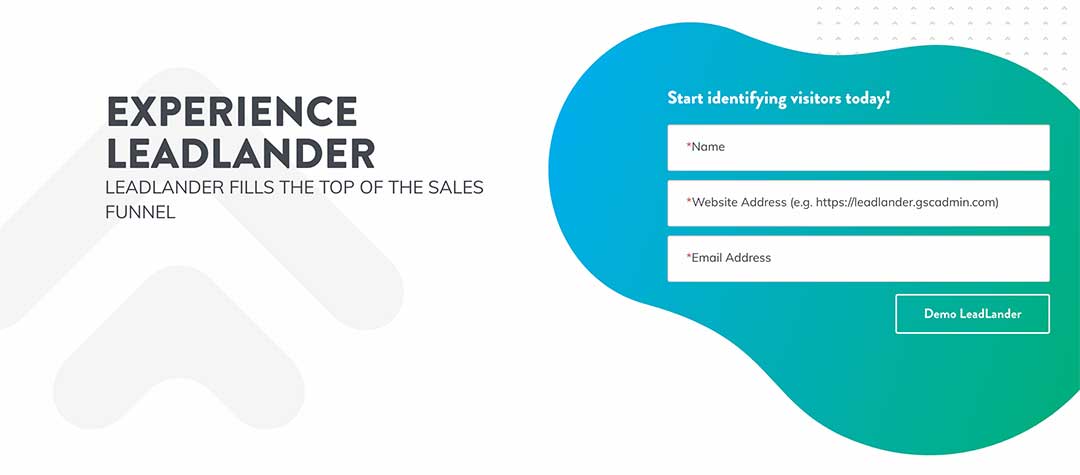
It will give you specific details about your website visitors and their company details including their website, address, and phone number. You can then use this powerful information to arm your salespeople so that they can help you achieve your revenue goals.
Final Thoughts
There’s no denying that top of the funnel marketing is one of the most effective ways to tap into a large pool of potential customers and maximize sales opportunities. However, there are a few things you must keep in mind before you jump in.
Understanding your audience and their search intent at the top of the funnel is crucial in creating personalized content that’s likely to resonate with them. Focus on establishing yourself as a thought leader and raising awareness with your content instead of just selling.
And finally, leverage automation tools to obtain specific details about your TOFU leads so that your sales team can nurture them effectively. A well-thought-out top-of-the-funnel content strategy can not only help you reduce costs but also greatly improve your retention and conversion rates.
